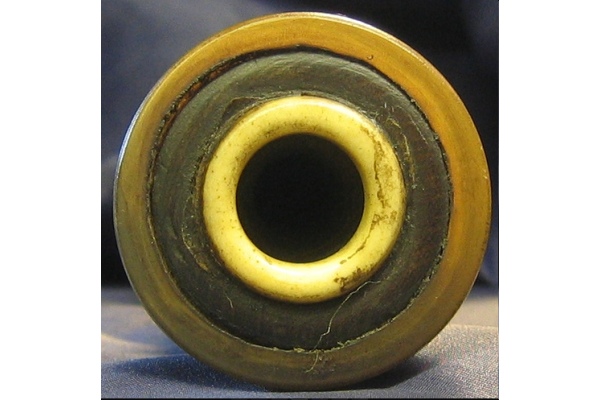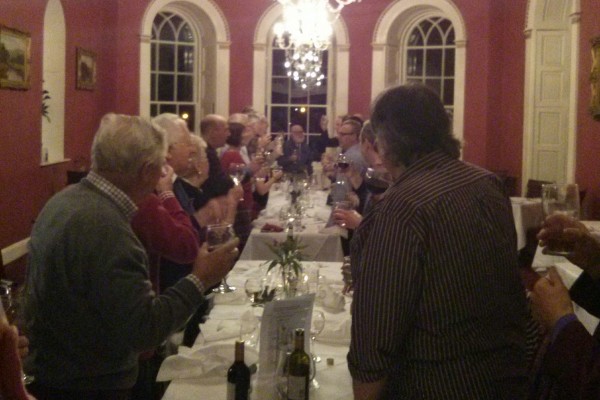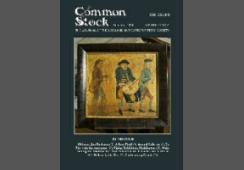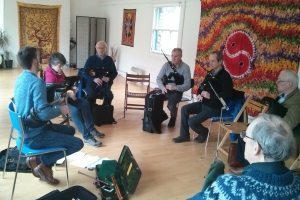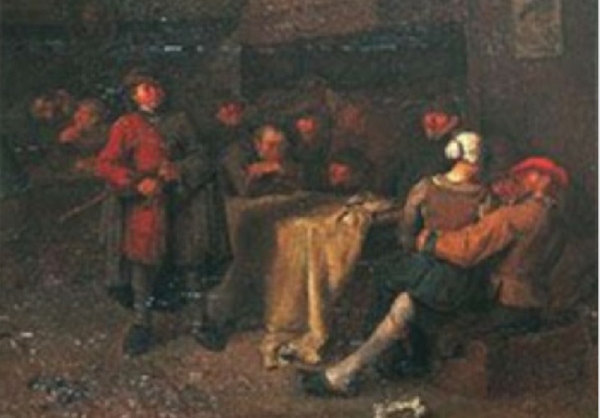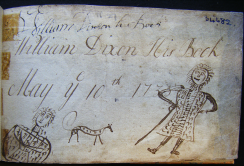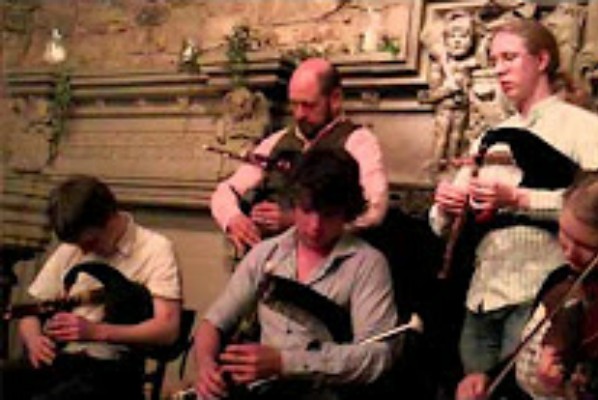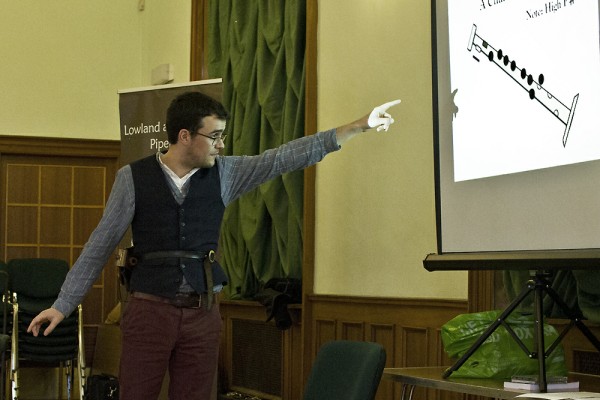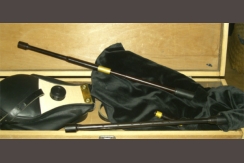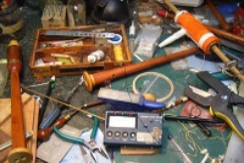Jane Moulder, editor of Chanter, the journal of The Bagpipe Society, happened to be in Scotland on the day of the competition and managed to visit; we asked her to give us her impression of the event.
I don’t know what’s happening at the moment, but it’s been nearly 30 years since I last visited Scotland and now I’ve been there twice in the last three months – and both times, I have called in at The National Piping Centre in Glasgow! Also, both visits have had, unsurprisingly, bagpipes as the main focus but the two events I attended were very different in character.
At the end of February I went to the International Bagpipe Organisation’s biannual Conference which was hosted by the Piping Centre. The conference featured bagpipes from across Europe and included piping traditions from Portugal, Malta, Bulgaria, Italy, Ukraine and Poland amongst others, as well as those a little closer to home. Julian Goodacre and Pete Stewart launched their valuable interactive internet resource, The Bagpipe Map, and Paul Roberts investigated pastoral bagpipes in 17th century England. Whilst, to keep the Scottish flavour of the host venue, Jack Taylor presented a clear and fascinating explanation of piobaireachd. Actual pipe-playing was reserved for the “come all ye” session on the Saturday night, where the atmosphere in the main hall was relaxed and informal.
The jovial environment of the Conference’s Saturday night was in stark contrast to the feeling in the Hall on my second visit – the annual competition of the LBPS. I have to admit at this point that I was not there for the whole day having succumbed to the lure of the Kelvingrove Gallery and Museum in the morning to soak up a bit of Mackintosh and the Glasgow Boys! However, I arrived just as the afternoon session had got underway and stayed through to the prize giving at the end.
My visit to Scotland was as a guest of Julian Goodacre. He had invited me, along with some other makers, to a tour of his workshop. The purpose was to give us all the rare opportunity of getting together to discuss various techniques and tools and maybe pass on tips and ideas to each other. So the visit to the Piping Centre and the LBPS competition was a bit of a bonus to the trip. I am a member of The Bagpipe Society (and editor of the Society’s journal, Chanter) and I had never been to an LBPS event before. However, I am certainly no stranger to music competitions as I used to work for the British & International Federation of Festivals, the umbrella organisation of the amateur competitive festival movement. At this point though I have to confess that I did not come prepared as a proper journalist, so no notepad and pencil and therefore I cannot say who I saw perform or recount which pieces of music I heard! However, I can easily recall the various impressions the event made upon me.
Firstly I was struck by what a friendly and supportive event it was despite the competitive nature of the occasion. There was obviously a wide range of standards from the experienced player and skilled performer through to the novice, first-time entrant. Nerves are a very funny thing and they seem to strike even a seasoned performer without warning and on a couple of occasions the judges allowed more than one attempt at a piece when the first try did not go as smoothly as the entrant would have liked. I got the feeling that the audience as a whole were positively willing the new duet entrants to complete their piece without it falling apart. Likewise, with a more experienced performer, whose accompanied song did not go to plan, the audience was equally supportive. On this occasion though, even the cheers of encouragement couldn’t persuade the competitor to finish his piece.
My own bagpiping repertoire is mainly from the 16th century and modern day Europe and I have never really explored the material of the Borders – other than a bit of Dixon, of course! So much of the material was very new to me but it was obviously standard fare to the LBPS. With that in mind, I would have liked to have heard the introductions by the various players who, on the whole, seemed to quickly and quietly whisper the titles of their pieces to the judges rather than announce them loud and proud to the Hall. This meant that I couldn’t mentally note the pieces I liked for further exploration when I got home. Whilst traditional music must continue to be played, I personally would have like to have heard more of the potential crossover into new or non-Border repertoire and techniques. I therefore particularly enjoyed the somewhat unusual combination of txalaparta (a Basque percussion instrument) and 3D printed multi-coloured small pipes (a nice mellow sound) as well as the groundbreaking, and truly impressive, duo of triple chanter smallpipes and double chanter Cornish pipes from Callum Armstrong and Julian Goodacre.
The event was moderately well attended, although I understand that it was considerably better patronised than the previous year’s. That said, it seemed that everyone knew each other and so the event had the air of a private party which could have been a bit intimidating should a complete newcomer have wandered in to compete. However, I have no doubt that they would have been duly welcomed and supported as everyone was very friendly. I don’t think the LBPS competition could have been more polar opposite than The Bagpipe Society’s, somewhat tongue in cheek, competition on the opening night of the Blowout. However, it was good to have visited the LBPS and to find out more about another branch of the wonderful world of piping. If you’re a member of the LBPS and have had second thoughts about attending and entering the competitions, I would urge you to think again – have a go – as I’m sure you’ll enjoy the experience.
Jane Moulder
April, 2016
